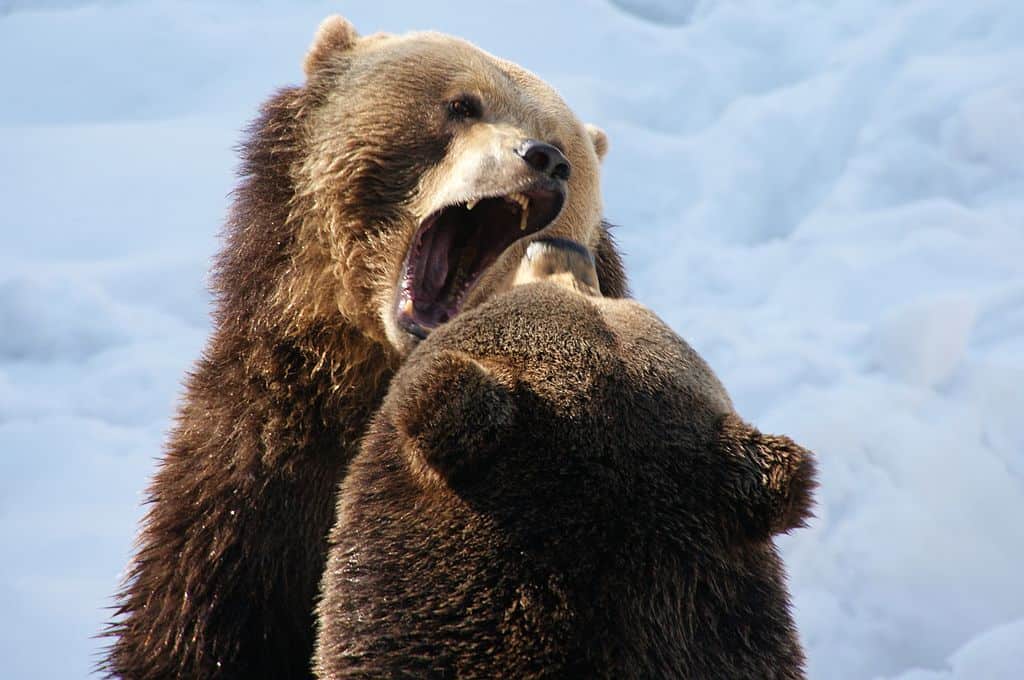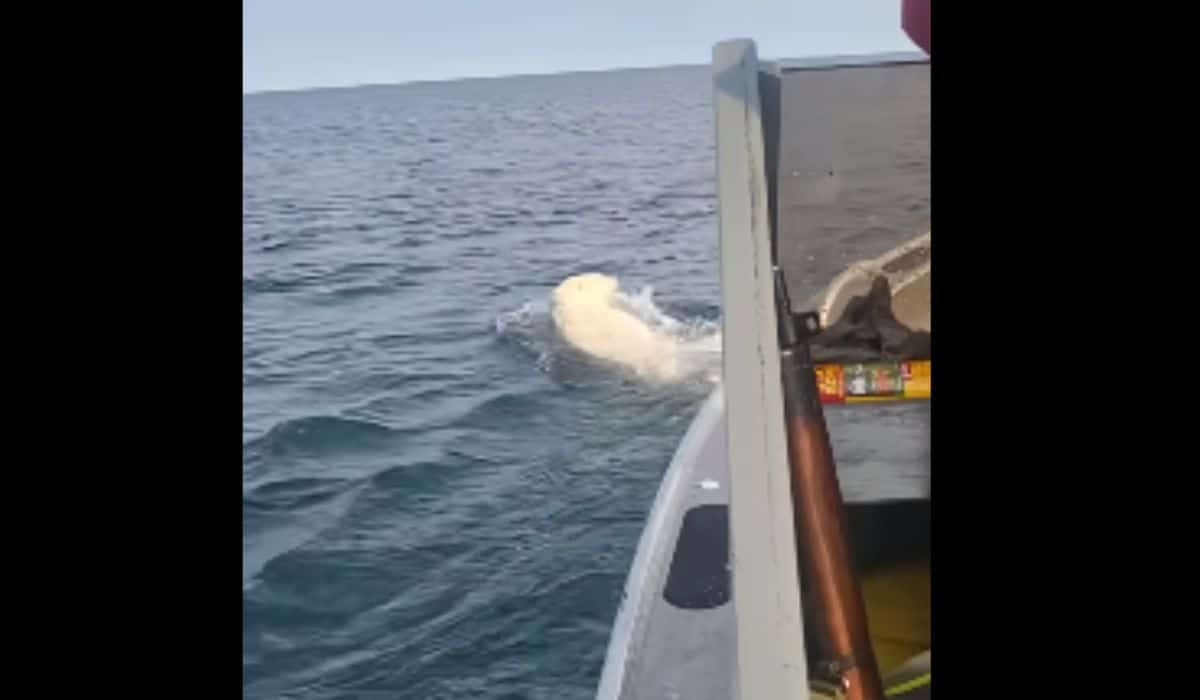In the icy expanse of Hudson Bay, Canada, a captivating sight emerges as a polar bear takes to the waters, highlighting nature’s beauty and the pressing concerns of climate change.


Hudson Bay, a vast saltwater body in northeastern Canada, recently became the backdrop for a mesmerizing spectacle. Video footage captured a polar bear gracefully swimming in the bay’s icy waters, an awe-inspiring and thought-provoking sight.


Polar bears are no strangers to water. They are excellent swimmers, capable of covering long distances. Their Latin name, Ursus maritimus, even means “maritime bear.” However, seeing a polar bear swimming in open waters, away from ice floes, is becoming increasingly common. This is not necessarily a sign of their love for swimming but rather an indication of the changing climate and its impact on their natural habitat.
Hudson Bay is home to a significant population of polar bears. During the colder months, the bay freezes, providing the bears with a vast icy platform to hunt seals, their primary food source. But with warmer temperatures, the ice breaks up earlier and forms later, reducing polar bears’ time on their hunting grounds.


The phenomenon of polar bears swimming long distances in open water is directly linked to the melting of Arctic ice due to global warming. As the ice retreats, polar bears swim greater distances to find food or reach solid ground. Although a testament to the bear’s strength and endurance, these marathon swims are also fraught with danger. They expend more energy risk hypothermia, and young cubs, not as strong as adults, often struggle to keep up.


The melting ice doesn’t just affect polar bears’ hunting patterns. It also impacts their breeding habits. With less ice, female polar bears find building dens for their offspring challenging, leading to decreased cub survival rates.


The sight of a polar bear swimming in Hudson Bay is a stark reminder of the fragile balance of our ecosystem. While it’s a captivating scene, it’s also a call to action. The challenges faced by polar bears are not isolated. Many species worldwide are feeling the effects of climate change, and their survival hangs in the balance.


Watch the FULL video here “Polar bear found swimming in Hudson Bay, Canada“
Polar bear found swimming in Hudson Bay, Canada, Source: YouTube, Uploaded: Newsflare





Watch the FULL video here “The 16 Deadliest Animal Predators”
The 16 Deadliest Animal Predators Source: YouTube, Uploaded: Animals Around The GlobeIn conclusion, the video of the polar bear swimming in Hudson Bay is a visual treat and a window into the challenges these magnificent creatures face. As the guardians of our planet, it’s our responsibility to address climate change issues and ensure that future generations can witness the beauty and majesty of the polar bear in its natural habitat.


Bears are fascinating creatures found in various parts of the world. Here are some interesting and lesser-known facts about these impressive animals.


Bears possess an incredible sense of smell, which is seven times better than a bloodhound’s. This acute sense helps them locate food from miles away and detect potential dangers in their environment.


Despite their bulky appearance, bears are surprisingly fast runners. They can reach speeds of up to 35 miles per hour, which is faster than the average human sprinter.


Most bear species have a diverse diet, eating both plants and animals. Their diet can include berries, nuts, fish, insects, and even small mammals, depending on the availability of food in their habitat.


Many bear species hibernate during the winter months to conserve energy. During hibernation, their body temperature drops, and their metabolism slows down significantly, allowing them to survive without eating for months.


Bear cubs are incredibly small at birth, weighing only about one pound. They are born blind and rely entirely on their mother’s milk and care until they grow stronger and more independent.
Thank you for following along with this article!
Next up:
Latest posts by Linnea H, BSc Sociology (see all)


 Polar bear found swimming in Hudson Bay, Canada, Image by Newsflare via YouTube
Polar bear found swimming in Hudson Bay, Canada, Image by Newsflare via YouTube
